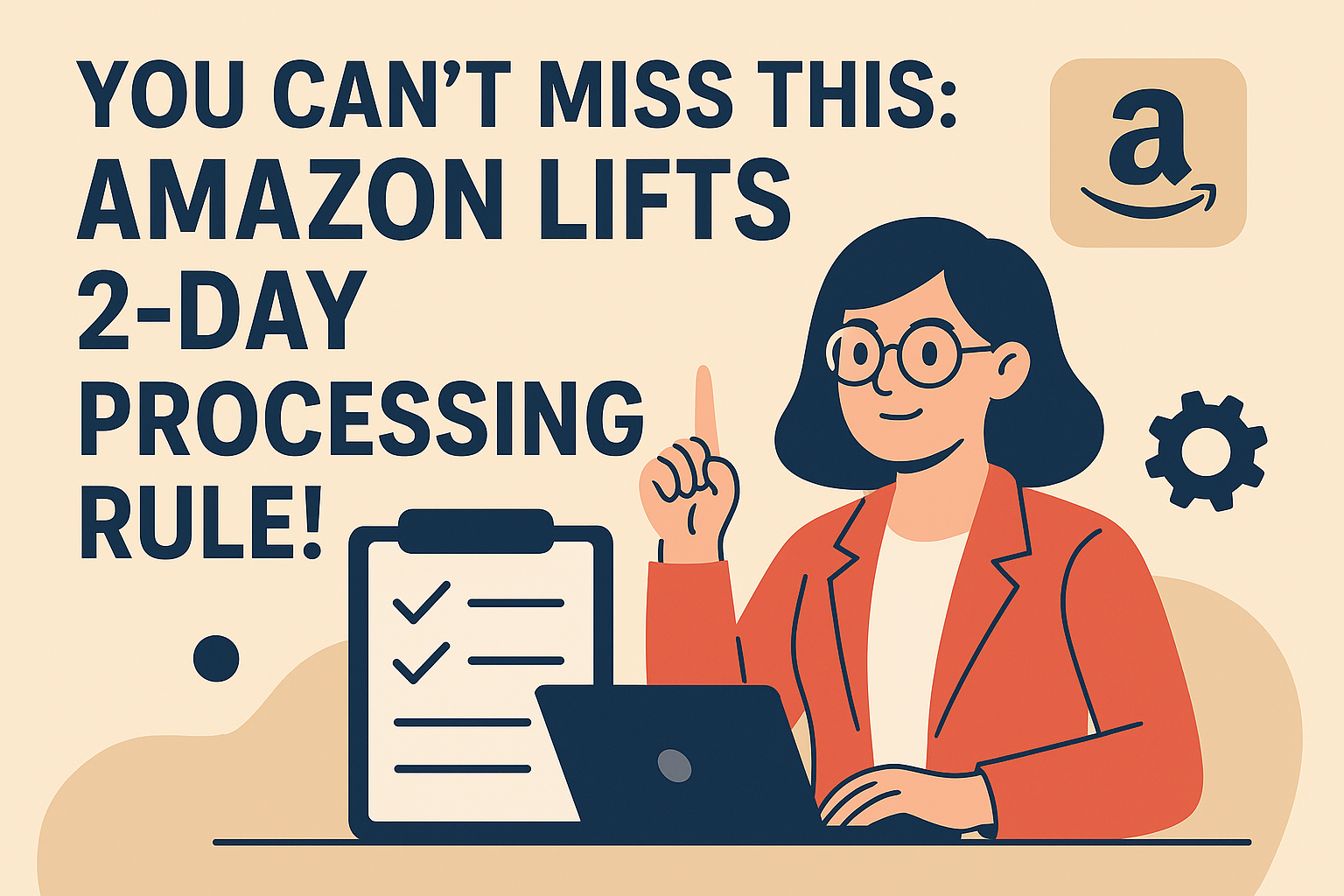Address
304 North Cardinal St.
Dorchester Center, MA 02124
Work Hours
Monday to Friday: 7AM - 7PM
Weekend: 10AM - 5PM

Overview
Amazon has officially removed its mandatory two-day order processing requirement, giving sellers the ability to customize fulfillment times based on product type, supply chain, and operational capacity. This new flexibility empowers U.S. Amazon sellers to better manage inventory flow, custom orders, and shipping expectations — but it also introduces new responsibilities in maintaining performance metrics and customer trust.
Previously, Amazon required a two-day processing window to support Prime-like delivery speeds and maintain consistent shopper experiences. However, as supply chains diversified and seller operations became more complex, this rigid standard became a burden — especially for custom, made-to-order, or imported products.
By removing the mandatory two-day rule, Amazon aims to:
Sellers can now define processing times per SKU, shipping template, or product group.
For instance:
While flexibility increases, Amazon still tracks:
Failing to meet your own declared timelines can still harm account health and Buy Box eligibility. Sellers extending their handling time should clearly display accurate estimates and monitor metrics daily.
Step-by-Step Setup
Best Practices
Extending processing windows provides predictability — but at a cost:
✅ Strategy Tip: Keep best-selling SKUs under short windows, and apply extended handling only to slow-moving or custom-made products.
| Strategy | Description |
|---|---|
| Tiered Processing | Offer fast-handling SKUs alongside slower ones. |
| Regional Segmentation | Shorten times for local warehouses; extend for remote supply. |
| Inventory Buffers | Keep backup stock to preserve quick processing for key SKUs. |
| Continuous Monitoring | Track conversion, cancellations, and delivery metrics per group. |
Amazon’s policy shift gives sellers a chance to operate more efficiently and sustainably. Start by:
With careful planning, you can protect account health, enhance customer trust, and maintain profitability — even with longer fulfillment times.
Q1: Will this affect my Buy with Prime or Seller-Fulfilled Prime listings?
Some programs still enforce faster handling. Always review their current service-level terms before applying extended timelines.
Q2: How will extended processing impact my performance metrics?
You’ll avoid “late shipment” penalties as long as you meet the new stated timelines. However, missed deadlines still harm your metrics.
Q3: Can I apply different handling times per SKU?
Yes. Amazon now supports SKU-level customization, letting you optimize based on sales velocity and supply chain type.
Next Steps:
✅ Audit your current handling times.
✅ Segment your catalog by speed and complexity.
✅ Test and monitor conversion impacts weekly.
📞 Need expert help optimizing your fulfillment settings or protecting account performance? Contact Us for a personalized fulfillment audit.